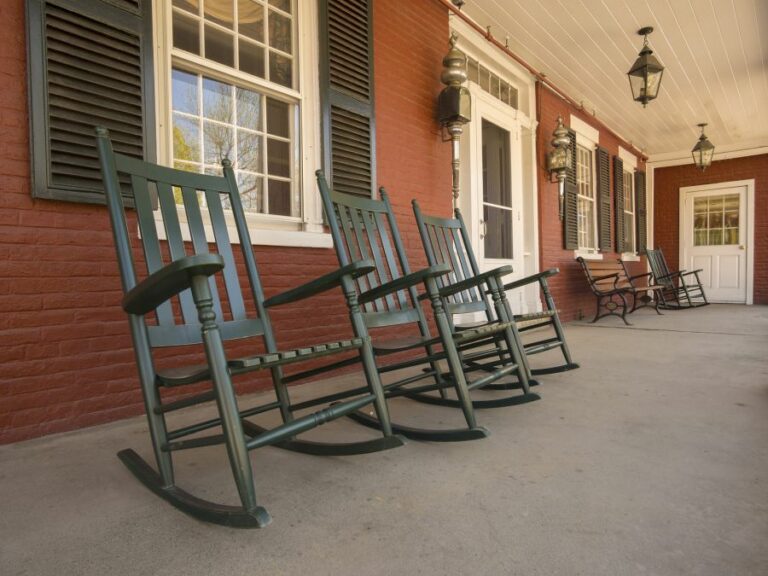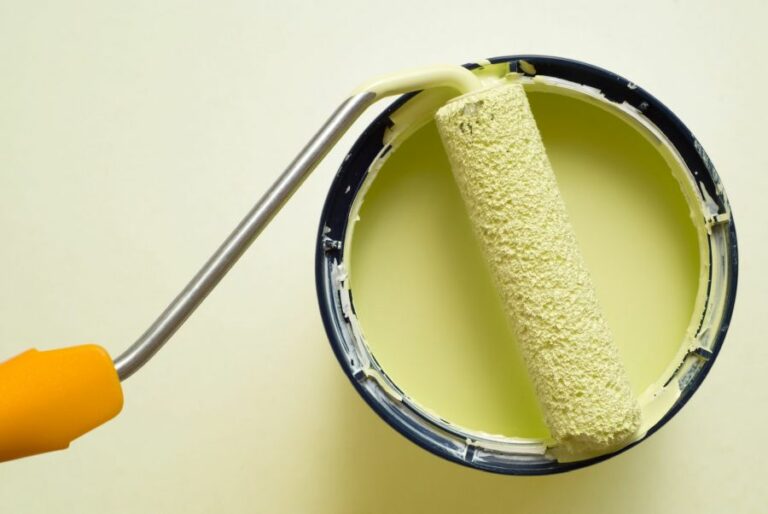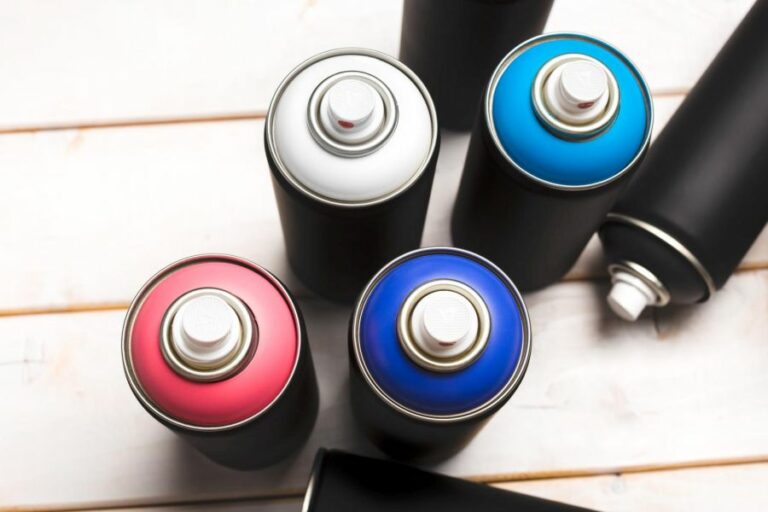Oil-Based Outdoor Paint, 25 Things You Should Know
Discover the transformative power of oil-based outdoor paint in this comprehensive blog post! Be it a fresh coat for your weathered garden fence or a vibrant revamp for your tired patio furniture, you’ll learn why oil-based paint is the best choice for durability and longevity. Not only will we guide you through the advantages and applications of using oil-based outdoor paint, but we’ll also recommend the best products out there.
Oil-based outdoor paint:>
Oil-based outdoor paint is popular for exterior surfaces due to its durability, superior adhesion properties, and attractive finish. It is suitable for various surfaces, including wood, metal, and masonry, and can withstand harsh weather conditions without peeling or cracking. While its disadvantages include long drying time, strong fumes, and a more difficult cleanup process, proper surface preparation, priming, and application can lead to stunning, long-lasting results. Reputable brands like Rust-Oleum, Benjamin Moore, and Sherwin-Williams offer high-quality oil-based outdoor paint products.

Explore the fantastic world of oil-based outdoor paints, their durability, rich colors, and myriad applications. Uncover expert tips on selecting the perfect paint, preparing the surface, and mastering application techniques for flawless, long-lasting results. Get ready to transform your exteriors!
Contents
- 1 Outdoor Oil-Based Exterior Paint
- 2 Evaluating the Suitability of Oil-Based Paints for Outdoor Applications
- 3 What is the Durability of Oil-Based Exterior Paint?
- 4 Evaluating the Effectiveness: Is Oil-Based Paint Superior to Water-Based Paint?
- 5 What is the Reason Behind the Illegality of Oil-Based Paint?
Outdoor Oil-Based Exterior Paint
• Introduction
For many years, oil-based outdoor paint has been a popular choice for homeowners and designers. Its long-lasting durability and attractive finish make it an ideal option for exterior surfaces, protecting them from harsh weather conditions and retaining their appearance over time.
• Advantages of Oil-Based Outdoor Paint
– Durability
One of the main benefits of using oil-based paint for outdoor projects is its durability. It is more resistant to wear and tear and can better withstand weather elements such as rain, snow, and sunlight. This type of paint is less likely to fade, peel, or crack in comparison to water-based paints.
– Adhesion
Oil-based paint has superior adhesion properties, making it ideal for exterior surfaces that are subject to movements, such as wood siding or trim. This increased level of adhesion results in a long-lasting bond and a decreased likelihood of chipping or peeling.
– Application
Oil-based outdoor paint is easy to apply on a variety of surfaces, including wood, metal, and masonry, as it does not require any primer. This versatility allows for a more efficient and quick application process, saving both time and effort.
– Finish
The smooth, glossy finish produced by oil-based paint is another advantage. This type of finish is attractive and easy to clean and maintain, ensuring your paint job looks great for years to come.
• Disadvantages of Oil-Based Outdoor Paint
– Drying Time
One of the main drawbacks of oil-based paint is its long drying time. Depending on the specific product, this paint type can take 8 to 24 hours to dry completely. This may result in a lengthier painting process and longer wait times between applying coats.
– Fumes & VOCs
Oil-based paint releases strong fumes and contains a higher level of volatile organic compounds (VOCs) in comparison to water-based alternatives. These VOCs can be harmful if inhaled, requiring proper ventilation and respiratory protection during application.
– Clean Up
Another disadvantage of oil-based outdoor paint is the cleanup process, which requires the use of harsh chemicals such as mineral spirits or paints thinner. This can be a concern for those who prioritize eco-friendly options when selecting paint products.
• Best Practices for Using Oil-Based Outdoor Paint
– Surface Preparation
Proper surface preparation is essential when using oil-based outdoor paint to ensure optimal adhesion and longevity. Begin by cleaning the surface thoroughly to remove dirt, grime, and mildew that may impede paint adhesion.
Follow this with light sanding to smooth any rough areas and create a uniform surface.
– Priming
Although oil-based paint does not generally require a primer, it’s essential to prime new wood, metal, or masonry surfaces for enhanced paint adhesion and a more even finish. There are specific primers available for each type of surface, so be sure to choose the correct one for your project.
– Paint Application
When applying oil-based outdoor paint, it’s best to use a high-quality brush, roller, or sprayer for a smooth and even finish. Begin at the top of the surface and work your way down, employing consistent pressure and even strokes.
Avoid overloading your brush or roller, as this can result in visible brush marks or unattractive drips.
– Drying Time & Additional Coats
As mentioned earlier, oil-based paint requires a longer drying time. If needed, be prepared to wait at least 8 hours before applying a second coat. Applying additional coats too soon can lead to poor adhesion or uneven paint coverage, impacting your paint job’s final appearance and durability.
• Recommended Oil-Based Outdoor Paint Brands
Based on my experience, there are several reputable brands known for producing high-quality oil-based outdoor paint, including:
- Rust-Oleum: This manufacturer offers a wide range of oil-based paints, including protective enamel and marine paint, suitable for various outdoor applications.
- Benjamin Moore: Known for its high-quality paint products, Benjamin Moore offers a line of oil-based exterior paint that provides excellent durability and a beautiful finish.
- Sherwin-Williams: Another well-respected brand, Sherwin-Williams offers oil-based enamel and alkyd paints designed for various outdoor surfaces.
• Conclusion
Oil-based outdoor paint is an excellent choice for homeowners and designers seeking a durable, versatile, and attractive paint option for exterior surfaces.
Though there may be some disadvantages, such as a longer drying time and the need for chemical clean-up, the dense finish, superior adhesion, and lasting durability offered by oil-based paint make it a popular option for outdoor applications.
By following best practices and considering personal experience with recommended brands, you can achieve stunning, long-lasting results using oil-based outdoor paint.
Evaluating the Suitability of Oil-Based Paints for Outdoor Applications
When it comes to painting outdoor surfaces, choosing the right type of paint is crucial. With a variety of options available, one popular choice is oil-based paint. It is essential to understand the characteristics of oil-based paint to determine if it is suitable for your outdoor painting needs.
• Advantages of Using Oil-Based Paint Outdoors
– Durability
One of the primary reasons people opt for oil-based paint for outdoor projects is its durability. Oil-based paints can withstand harsh weather conditions, such as strong sunlight, heavy rain, and extreme temperatures.
They also resist chipping, peeling, and other forms of wear and tear. When properly applied and maintained, oil-based paint can last for many years, making it an ideal choice for exterior surfaces that require a long-lasting finish.
– Excellent Coverage
In general, oil-based paints offer better coverage than water-based alternatives. This means that you may need fewer coats of paint to achieve the desired opacity and color saturation level. As a result, you’ll save both time and money on your painting project.
– Smooth Finish
When it comes to achieving a smooth and professional-looking finish, oil-based paints are a top choice among experts. The slow-drying nature of oil-based paint allows for more extended open time, which means the paint can be leveled and smoothed on the surface more efficiently.
This can result in a more uniform appearance with fewer visible brush strokes or roller marks.
– Adhesion
Oil-based paints are well-known for their excellent adhesion properties. They can bond well to most surfaces, even those that are not entirely clean or have a slightly rough texture.
This characteristic means that oil-based paint is especially suitable for outdoor surfaces that may accumulate dirt, moisture, or other debris over time.
• Disadvantages of Using Oil-Based Paint Outdoors
– Environmental Impact
The environmental impact is one of the most significant downsides of using oil-based paint outdoors. Oil-based paints contain volatile organic compounds (VOCs), which are harmful to the environment and contribute to air pollution.
Some regions enforce strict regulations on the use of oil-based paints, while others have banned them altogether.
– Odor
The strong smell of oil-based paint can be a significant drawback for many people. The fumes can irritate the eyes, nose, and throat, making them uncomfortable to work with for an extended period.
Additionally, the odor may linger for several days after the painting is complete, causing discomfort for those living in or near the freshly painted area.
– Clean-Up
Cleaning up after using oil-based paint is more challenging than with water-based alternatives. Oil-based paint requires the use of solvents, such as mineral spirits or paint thinner, to clean brushes, rollers, and other painting tools.
This adds an extra step to the painting process and generates more waste, as the solvents need to be disposed of properly.
– Drying Time
Oil-based paint takes longer to dry than water-based paints, which can be inconvenient in some outdoor painting projects. This extended drying time leaves the painted surface vulnerable to dirt, debris, and even insects getting stuck in the wet paint.
Additionally, if rain is in the forecast, you’ll need to wait for a more extended period of clear weather to ensure the paint dries properly.
• Expert Recommendations
Based on years of experience, here are some recommendations to consider when deciding whether to use oil-based paint for your outdoor painting project:
- Consider the surface: Oil-based paint is an excellent choice for surfaces that require a durable and long-lasting finish, such as wood, metal, and masonry. However, it may not be the best option for surfaces that are frequently exposed to moisture or have poor ventilation, as oil-based paint can trap moisture and lead to peeling and blistering.
- Choose a low-VOC paint: If you’re concerned about the environmental impact of oil-based paint, opt for a low-VOC option. These paints contain lower concentrations of VOCs, making them a more environmentally friendly choice while offering oil-based paint benefits.
- Use a primer: To ensure optimal adhesion, use a primer that is compatible with oil-based paint. This step will also help to create a more uniform surface and promote even coverage of the paint.
- Take precautions: When working with oil-based paint, wear a well-fitted mask to minimize the inhalation of fumes. Keep your workspace well-ventilated, and take breaks as needed to minimize exposure to the paint’s strong odor.
In conclusion, oil-based paint can be an excellent choice for outdoor painting projects due to its durability, coverage, and smooth finish. However, weighing the pros and cons, including the environmental impact, odor, and clean-up process, is essential before making your decision.
Following the expert recommendations, you can determine if oil-based paint is the best option for your next outdoor painting project.
What is the Durability of Oil-Based Exterior Paint?
The oil-based exterior paint, also known as alkyd or solvent-based paint, has been a popular choice for homeowners and professional painters for many years.
Its durability, weather resistance, and vibrant colors make it an attractive option for protecting and beautifying the exterior of homes and other buildings.
• Factors Affecting the Lifespan of Oil-Based Exterior Paint
There are several factors that can impact the longevity of oil-based exterior paint. These include the quality of the paint, the surface it’s applied to, the climate and weather conditions, and the skill of the painter. Let’s discuss each of these factors in more detail.
– Quality of the Paint
The composition and quality of the paint can make a significant difference in its lifespan. Higher-quality paints usually contain more resins and pigments, which help to create a durable and long-lasting finish.
They may also contain additional UV inhibitors, mildewcides, or other additives to ensure maximum durability and resistance to the elements.
When selecting an oil base exterior paint, I recommend looking for a reputable brand and choosing paint specifically formulated for outdoor use.
Be prepared to invest a little more since higher quality paints typically come with a higher price tag, but remember that the investment will be worthwhile when considering the paint job’s longevity.
– Surface Preparation and Application
Proper surface preparation cannot be stressed enough to increase the paint job’s longevity. Oil-based exterior paint adheres best to clean, dry, and smooth surfaces. Before applying the paint, make sure to properly clean the surface to remove dirt, mildew, and any loose or peeling paint.
Repair any damaged areas, and apply primer if necessary to ensure an even and well-adhered paint finish.
The skills and techniques of the painter are equally critical. Be sure to stir the paint thoroughly before and during the application, as this ensures the proper distribution of pigments and additives. Apply the paint uniform and even thickly; typically, two coats are recommended.
Follow the manufacturer’s instructions on drying time and conditions between coats.
– Climate and Weather Conditions
Oil-based exterior paint is highly resistant to most weather conditions. However, extreme climates or constant exposure to moisture, sunlight, and temperature fluctuations can take their toll on the paint.
In colder climates, the paint may start to crack due to the expansion and contraction of the building materials, while in hotter climates, the constant exposure to sunlight could cause paint to fade more quickly.
To combat these issues, be sure to choose exterior paint that’s designed to withstand your region’s specific climate conditions. This might include paints with added UV protection, mildew resistance, or flexibility.
• The Expected Lifespan of Oil-Based Exterior Paint
Considering all of these factors, the lifespan of high-quality oil-based exterior paint can range from 10 to 15 years. Lower-quality paint or poor application may result in a lifespan of only 5 to 7 years.
Investing in quality paint and proper application techniques can maximize the lifespan of your paint job and reduce the need for repainting in the future.
• Tips for Maximizing the Lifespan of Oil-Based Exterior Paint
In order to make your oil-based exterior paint last as long as possible, follow these tips:
- Choose the right paint: As mentioned earlier, higher quality paints with added protection against the elements will ensure better longevity. Research and select paint specifically designed for your region’s climate.
- Proper surface preparation: Thoroughly clean and prepare the surface, including removing loose or peeling paint, repairing damage, and applying a suitable primer.
- Application: Apply the paint in a uniform and even thickness, using two coats and following the manufacturer’s instructions.
- Maintenance: Keep an eye on your paint job and address any issues, such as mildew or peeling paint, as soon as they arise. A well-maintained paint job will last much longer than one that’s neglected.
In conclusion, when properly applied and maintained, oil-based exterior paint can provide a long-lasting, durable, and attractive finish for your home or building.
By understanding the factors that contribute to its lifespan and following the tips provided in this article, you can ensure that your investment in both time and money is well worth it.
| Oil-Based Exterior Paint | |
|---|---|
| High-quality oil-based paint | Expected Lifespan |
| Average-quality oil-based paint | 7-10 years |
| Low-quality oil-based paint | 5-7 years |
| Low-quality oil based paint | 3-5 years |
Evaluating the Effectiveness: Is Oil-Based Paint Superior to Water-Based Paint?
As somebody who has spent years working with paints and coatings, one common question I often encounter is whether oil-based paint is better than water-based paint.
The answer to this question is not as straightforward as it seems, as each type of paint has its own set of advantages and disadvantages.
• Understanding the Basics: Oil-Based vs. Water-Based Paints
Before diving into a comparison, let’s first understand the basis of these paints. As the name suggests, oil-based paints are made with oil (usually a natural oil like linseed or a synthetic oil like alkyd) as their primary binder. This means that the pigments in the paint adhere to surfaces with the help of this oil.
On the other hand, water-based paints are composed of water and a polymer (usually acrylic, latex or PVA) as their primary binder. This means that the pigments in water-based paint are suspended in water, which evaporates as the paint dries to leave behind a film of hardened polymer.
• Drying Time and Hardness
Oil-based paints are generally known for their long drying time, which can range from 8 to 24 hours depending on the thickness of the paint and environmental factors such as humidity and temperature.
This slow drying time can be an advantage in certain situations, as it allows for a more extended working period and facilitates better leveling of the paint to achieve a smooth finish.
However, this also means that you need to wait longer before applying a second coat or placing objects against the painted surface.
Water-based paints, in contrast, have a much shorter drying time of about 1 to 6 hours, which is an advantage when you aim to finish a painting job quickly.
However, this rapid drying time can make it challenging to achieve smoother brush strokes or erase mistakes before the paint dries. In terms of hardness, oil-based paints generally result in a harder, more durable finish as compared to water-based paints.
Recommendation from personal experience: If you can afford to wait for a more extended drying time and need a smooth, highly durable finish, go for oil-based paint. However, if quick turnaround time is your priority, water-based paint would be the more suitable choice.
• Ease of Application and Cleanup
Water-based paints are often favored for their ease of application and cleanup, as they can be diluted and cleaned up using water. You don’t need to invest in specialized paint thinners or solvents for this purpose. This factor is convenient, more environmentally friendly, and less toxic.
On the other hand, oil-based paints require turpentine or mineral spirits for thinning and cleanup, which can be quite messy and generate fumes. These solvents are harmful to the environment and can lead to respiratory issues in enclosed spaces without proper ventilation.
Recommendation from personal experience: If you value convenience, eco-friendliness, and minimal fumes, water-based paint is your best bet.
• Color Retention and Yellowing
A critical difference between oil-based and water-based paint lies in its color retention capacity. Oil-based paint excels in maintaining its original colors for a very long time, especially when it comes to darker shades.
Although improved in recent years, water-based paints are still not as effective at retaining their color over time.
However, when it comes to lighter shades, oil-based paints have a tendency to yellow with time, predominantly in areas with limited sunlight exposure. This is not an issue with water-based paints, which will maintain the original color without any yellowing.
Recommendation from personal experience: If long-lasting color retention, especially for dark shades, is critical for your project, oil-based paint would be the ideal choice. For projects with light colors, water-based paint can help you avoid the issue of yellowing.
• Final Thoughts
In conclusion, there is no definitive answer to whether oil-based paint is better than water-based paint, as it largely depends on your specific requirements, preferences, and the nature of your project.
Each type of paint has its own set of advantages and drawbacks, and understanding these differences can help you make an informed choice that best suits your needs.
Oil-based paints are an excellent choice for projects requiring durability, hardness, and long-lasting color retention, while water-based paints offer benefits such as quick drying time, ease of cleanup, and better performance on light colors without yellowing.
Ultimately, the choice between the two will depend on the priorities you have for your painting project.
What is the Reason Behind the Illegality of Oil-Based Paint?
Over the years, oil-based paint has been popular for many painters and homeowners thanks to its durability, rich colors, and smooth finish. However, the use of oil-based paint has become increasingly regulated and, in some cases, illegal.
Let’s explore the reasons behind these restrictions, focusing on the potential harm posed by the paints to both human health and the environment. I will also discuss available alternatives to oil-based paint that can produce similar results.
• The Role of VOCs in Oil-Based Paints
The primary reason for the restrictions on oil-based paint is its high content of volatile organic compounds (VOCs). VOCs are chemicals that readily evaporate into the atmosphere, contributing to air pollution both indoors and outdoors.
When oil-based paint is applied, VOCs are emitted into the air as the paint dries and cures. Examples of VOCs commonly found in oil-based paint include formaldehyde, ethylene glycol, xylene, and toluene. T
These chemicals can seriously impact our health and the environment, as I will discuss in the following sections.
– Health Concerns Related to VOCs
Exposure to VOCs can cause a range of health issues, and the severity of these effects depends on the length of exposure, the concentration of the VOCs, and individual health factors.
Short-term exposure to high levels of VOCs can cause symptoms such as:
- Eye, nose, and throat irritation
- Headaches
- Dizziness
- Nausea
- Allergic skin reactions
Long-term exposure has been linked to more serious health issues, including:
- Damage to the liver, kidneys, and central nervous system
- Increased risk of cancer
- Respiratory diseases and asthma exacerbation
- Neurological disorders
VOCs are especially dangerous for vulnerable groups like children, the elderly, and those with pre-existing medical conditions.
– Environmental Impacts of VOCs
VOCs contribute to the formation of ozone and particulate matter, both of which are major components of air pollution.
When these compounds react with sunlight and other chemicals in the atmosphere, they can form ground-level ozone, a harmful pollutant that has been linked to respiratory illnesses and heart disease.
Additionally, VOCs can harm ecosystems by contributing to the formation of acid rain and eutrophication, which occurs when excess nutrients from pollutants lead to the excessive growth of algae in water bodies.
This process can deplete oxygen levels, ultimately resulting in the death of aquatic species.
• Regulations and Bans on Oil-Based Paint
In response to the growing concerns over VOCs’ health and environmental impacts, many governments have restricted or banned the use of oil-based paint. In the United States, for example, the
Environmental Protection Agency (EPA) sets strict limits on the amount of VOCs that can be emitted by various consumer products, including paints.
State and local governments may also impose additional regulations on oil-based paint, with some areas banning it entirely. For instance, Southern California has some of the country’s strictest regulations on VOC emissions, making the use of oil-based paints virtually impossible within the region.
Similar restrictions can be found in other countries, such as Canada and many European nations, where the paint industry has also shifted to producing low-VOC alternatives.
• Alternatives to Oil-Based Paint
Given the regulations and growing awareness of the dangers of oil-based paint, many consumers are seeking alternatives that still provide a high-quality finish without harmful chemicals. There are several options currently available, such as water-based paints, low-VOC paints, and natural paints.
– Water-Based Paints
Water-based paints, also known as latex or acrylic paints, use water as the primary solvent. They contain far fewer VOCs than their oil-based counterparts and are generally easier to clean up.
Water-based paints have improved in quality over the years, becoming more durable and offering a variety of finishes. They are now a popular choice for both professional painters and DIY enthusiasts.
– Low-VOC Paints
Some newer formulations of paint have been developed specifically to comply with VOC regulations. These low-VOC paints emit significantly fewer VOCs, providing a healthier option without sacrificing the finish quality.
It’s important to note that “low-VOC” doesn’t necessarily mean “VOC-free”; checking the paint’s specific VOC content before purchasing is crucial.
– Natural Paints
Natural paints are made from sustainable, non-toxic materials such as clay, milk proteins, and plant-based binders. These paints offer a healthier and more environmentally friendly alternative to oil- and synthetic water-based paints.
However, they may have a more limited range of colors and finishes, and some require additional treatments or sealers to achieve the desired durability.
• Conclusion
While oil-based paint has its advantages in terms of finish and durability, its high VOC content poses significant health and environmental risks. As a result, its use has become increasingly regulated and sometimes illegal.
By understanding the reasons behind these restrictions and exploring available alternatives, we can make informed choices when selecting paint for our homes and projects.
I recommend considering water-based, low-VOC, or natural paints to achieve a beautiful finish without the harmful effects associated with traditional oil-based options.







